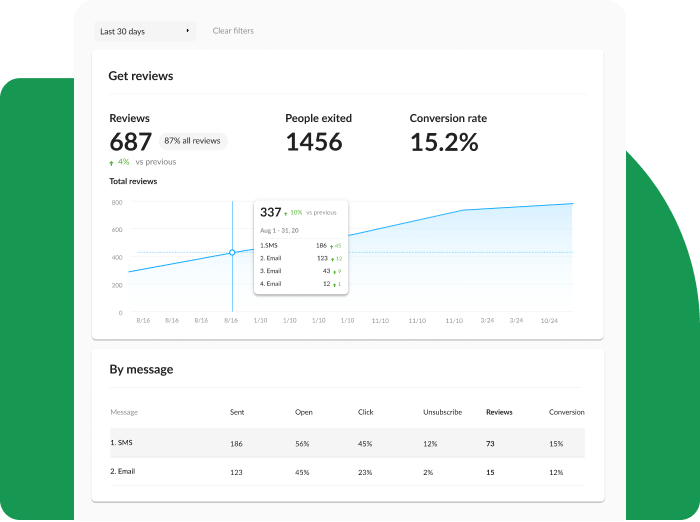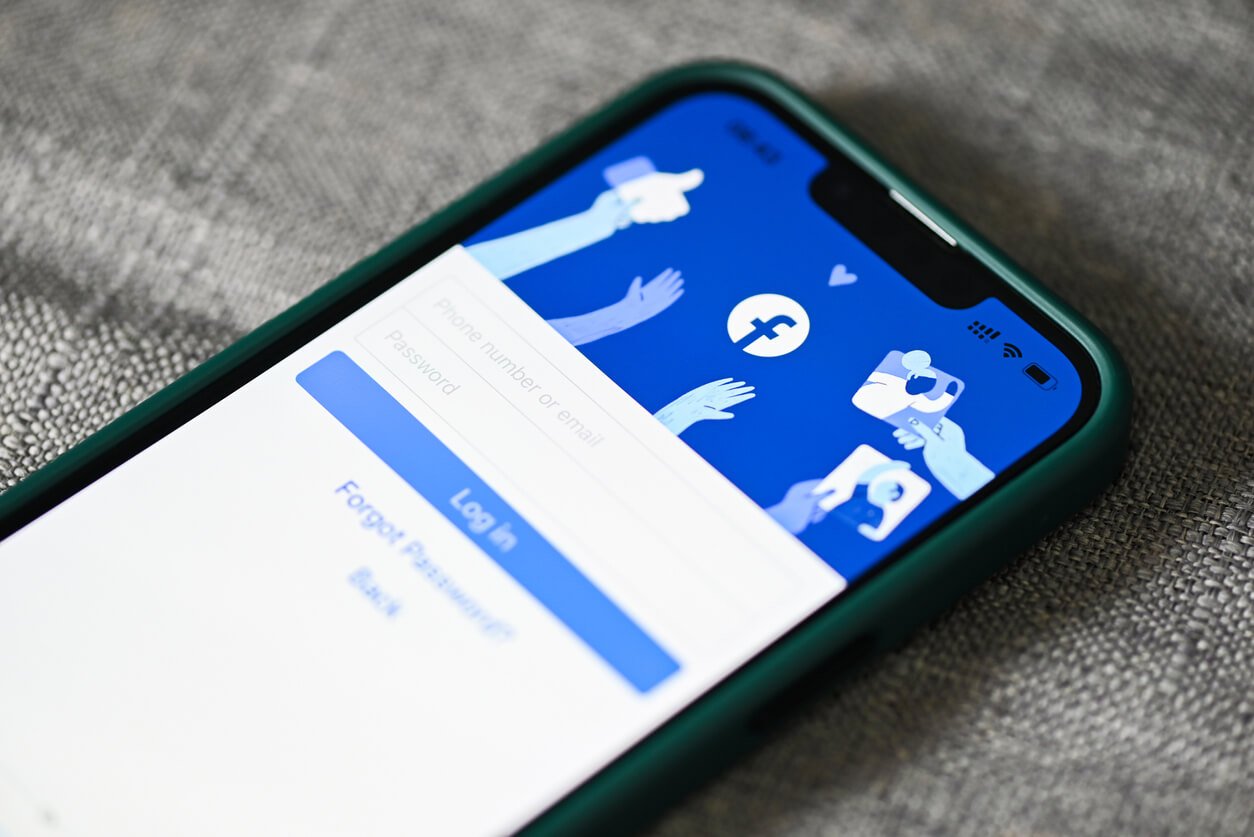9 Multi-Location Marketing Strategies to Grow Your Local Business Sustainably
Hey, multi-location business owner! 👋 We're happy your here. Why?
Because it means (we hope) that you're ready to put more pep in your multi-location business' marketing step!
Running a business is not easy. The potential fires some people have to put out with a single business location is tough, never mind two, three, or more!
Done right, running a multi-location business can open up a whole world of new opportunities for entrepreneurs. The right combo of multi-location marketing strategies can help you in many ways. They can add to your loyal customer base and increase profit margins, just like a single-location business.
The difference lies in the approach.
One of the biggest benefits of owning multiple locations is the ability to reach a broader audience. This can be profitable for businesses that offer unique products or services that are not available in other locations or elsewhere, or that you offer better than your competitors. This often results in stronger customer loyalty and repeat business, leading to more sales and growth opportunities!
Around 46% of all searches on Google are made to find a local business. Making sure that you're marketing each business location in the best way possible is a big key to success in their local communities.
That’s where multi-location marketing comes into play.
What is multi-location marketing?
Multi-location marketing involves the development and execution of marketing strategies across branches or franchises.
It involves tailoring marketing efforts to each location while maintaining a common brand identity.
The tactics you use in a multi-location marketing strategy can include online and offline channels. These include social media advertising, email marketing, print advertising, and local events.
Effective multi-location marketing requires careful planning, coordination, local messaging, and a deep understanding of each location's customers.
What’s the difference between single and multi-location businesses when it comes to marketing?
There are a few main differences between single and multi-location businesses when it comes to marketing:
Level of coordination
A single-location business can rely on a central physical or digital marketing strategy. A multi-location business will likely have to create a cohesive brand identity while customizing its marketing efforts to each location. This requires a high level of coordination and planning.
Level of complexity
A single-location business usually has a smaller target audience. So it relies on local marketing efforts, such as flyers, posters, digital ads, local news and events. Multi-location businesses have to contend with a much wider audience.
This doesn't necessarily mean the tactics or strategy are different. However, multi-location business owners will have to do marketing at scale which can make running a business more complex.
Marketing technology and analytics tools
Multi-location businesses invest in more sophisticated technology. This is so that they can manage their marketing efforts across multiple locations.
For instance, a restaurant chain may use a customer relationship management (CRM) system to track customer preferences across all locations. Using a CRM will allow them to tailor their marketing efforts to each customer's unique needs and preferences.
The best multi-location business marketing strategies you should try
As a multi-location business, you need to adapt your marketing strategy to ensure that your brand is visible in all your locations. Here are some of the best multi-location business marketing strategies you should try:
1. Establish clear brand guidelines
Imagine walking into a restaurant or getting lawn care done. Then a month later you walk into the same location or have the same company visit your home, and they're showing you different prices or wearing different uniforms.
It would cause a bit of confusion, right?
This is why a central brand guide is important: it helps maintain consistency across Location 1, Location 2, and so on. And ultimately gives customers that same great experience you gave them the first time.
Your brand should have a consistent tone of voice, visual identity, and messaging across all your marketing channels.
Additionally, they begin to associate it with the quality of products and services you offer, regardless of location. For example, multi-location brands like KFC have a singular brand voice and identity. It has remained the same for over six decades across all its locations worldwide.
(Just don't expect to get the exact same McDonald's menu items in Asia or Europe as you would in the U.S. 😉)
2. Leverage your reputation
Around 98% of consumers believe that online reviews are important when making buying decisions.
It makes sense to make your business’s online reviews a key part of your multi-location marketing efforts. Your business reputation is a valuable asset that can help build loyalty and attract more customers.
Managing customer reviews through an easy-to-use platform like NiceJob can be a game-changer for multi-location companies and the local business owners who run them.
It enables you to showcase the positive 5-star experiences that you've provided to your customers, boost brand awareness, and drive more sales. It also improves your online reputation by leaps and bounds.
Easily get more reviews, referrals, and sales
Meet NiceJob, the reputation marketing software that turns your customers into vocal fans to grow your business. Try it free for 14 days. No credit card required.
Start Free
3. Optimize local SEO for all locations
If you didn't know how important local SEO (search engine optimization) is to the success of an online business, now you know.
It can be instrumental in driving traffic to your website and increasing your online visibility. By optimizing your ads for local search, you increase your chances of appearing in local search results for your target audience.
For multi-location marketing, use relevant keywords, especially those that highlight your various locations. For example, if you sell pizzas in New York City, using keywords such as “best pizza in Harlem/Soho/Greenwich Village” can increase your chances of reaching local customers.
4. Create location-specific landing pages on your website
Try to create a separate local landing pages on your website for each location where your multi-location business operates.
No two locations are the same! Let's say you're in home services — the services you add in a state that gets snow is going to vary from what you'd offer to a state that gets none (or vey little).
This will help you highlight the unique aspects of each location. Plus, you will enable potential customers to find reliable information about each location with ease.
Take Mighty Dog Roofing as an excellent example of how to organize landing pages on a multi-location business website.
On their main website Mighty Dog Roofing a map that lists all of their locations and, for each one, they've created a location-specific landing page to provide a more smooth, accurate, and personalized journey for their visitors.
5. Segment your audience by location
Segmentation is the process of grouping people based on shared characteristics and preferences. These segments share common features like behaviors habits, demographics, physical location, more. Segmenting people in this way can help you create targeted and personalized marketing campaigns the connect with potential local customers better.
There are many different ways in which you can segment your audience. Here are a few examples:
-
Demographic segmentation: It takes into account factors like age, gender, occupation, income, education, ethnicity, and marital status to create personalized marketing strategies.
-
Behavioral segmentation: You can divide people into groups based on their behaviors, like online shopping habits, social awareness, and social media use. This can help you focus on marketing to specific groups.
-
Geographic segmentation: You can create a marketing strategy that targets consumers in a particular geographical area. This can be as small as a specific zip code, neighborhood, or even a few city blocks.
6. List your businesses on local directories
Listing your business on local directories like Google Business Profile pages can help increase your online visibility and drive traffic to your website. These business listings are often the first place that customers look when searching for local businesses.
For multiple location businesses, you can leverage free tools like Google Business Profile to manage them all with location groups and the bulk location management feature.
But keep in mind that the process will be slightly different if your multi-location business has 10 or more locations.
7. Be an active member of the local community
Being involved in the communities around your business locations can help build trust. It can also help establish lasting connections with customers.
You can take part in local events, sponsor local charities, and support other local businesses and causes. This will help show customers you truly care about the community.
As we wrote in How to Promote Your Business Locally, being an active local community member "presents a perfect brand awareness play — you get your brand name out there, educate locals about what you can do to help them, all while supporting other community causes."
8. Use geo-targeting in ads
If you live on the east coast and you get a tag for a west coast business location, it's just not going land. You'll instantly think it's irrelevant and keep scrolling.
Geo-targeting is an effective way to reach customers in specific locations. For example, you can geo-tag your ads so that they identify the exact location of the business posting the ads.
Your target location could be as small as a neighborhood, or as large as the entire city. Using location-based targeting in your ads helps increase the effectiveness of your marketing campaigns.
Ultimately, geo-targeting enables you to optimize your ads so that you can reach the right customers at the right time.
9. Take advantage of social media marketing
Social media is an essential part of a multi-location marketing strategy for building brand awareness and engaging with customers.
A well-thought-out game plan will help you build a loyal social media following, drive traffic to your website, and generate leads for your business. Use your social media channels to deliver brand messaging as well as targeted content relevant to specific locations.
For example:
-
A Toronto-based hair salon can post before-and-after photos of its clients on TikTok with the "torontohairsalon" hashtag (which gets ~30 million views) to attract new business.
-
Accountants can share location-specific discounts on Facebook during tax season, because who doesn't love saving money that time of year?
-
Pressure washers can share reviews on Instagram to highlight their great reputation and generate more word-of-mouth business — without spending a dime on ads!
The multi-location marketing platform you didn’t know you needed
Struggling to keep track of your business's online reputation across multiple locations? NiceJob's reputation marketing platform is the solution.
With our review management software, multi-location businesses can compare customer feedback across locations. You can also identify trends and areas of improvement. Finally, you can make data-driven decisions to improve customer satisfaction and loyalty.
Plus, our dashboard makes it easy to manage and respond to reviews from one central location. Check out how NiceJob helped You Move Me get the reputation it deserves.




